During the Victorian era, dining was elevated to a "high art". Dinner was for more than just eating, it was an important social ritual. It allowed the family and friends to engage in conversation, listen to music and appreciate the finer aspects of life. They were definitely not into "fast food" or drive thru restaurants.
The rituals grew very elaborate during the 1870 - 1890 time period, and silver which had always been an important part of the dining process assumed an even greater importance. As the variety of foods increased, new designs in silver implements increased at a very rapid rate, until at one point there were over 100 different types of serving pieces available.
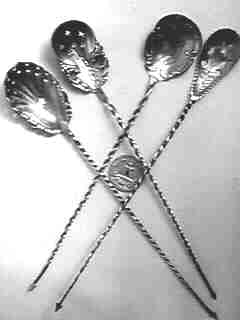
Most of these varieties simply do not hold a great deal of interest to me, although I do acquire unusual looking pieces when I have the opportunity. But for some unknown reason, even to myself, I seem to be attracted to pointed end olive servers. I do not know what fascinates me about these, but for your enjoyment, I have photographed some of these for this page.
These spoons are usually about 8.5" - 9" (215 - 230mm) long, have pierced bowls, twisty handles and a barbed end which was used to spear the olive. Since olives were usually stored in a brine, the bowl end had holes so that the brine could drain out.
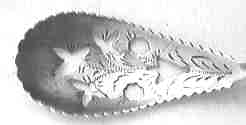
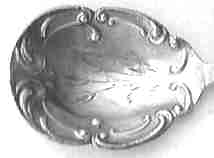

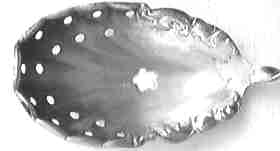
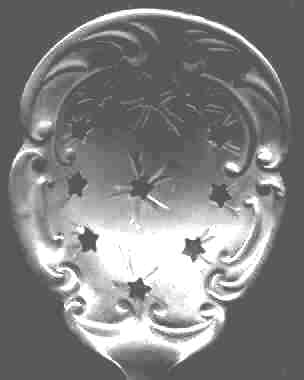
Samples of olive spoon bowls
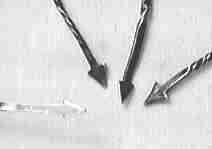
close up of barbed ends
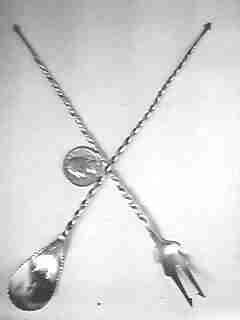
the quarter is to show relative size
Many varieties of different serving utensils may be found in Richard Ostenberg's "Sterling Silver Flatware for Dining Elegance", a book which is still available in book stores. He says that this piece is a derivative of the sucket forks of the 18th century. "Sucket was preserved fruit in sugar that was sometimes flavored with spirits. The fruit was speared, and served with a drink or to be eaten by the guest."

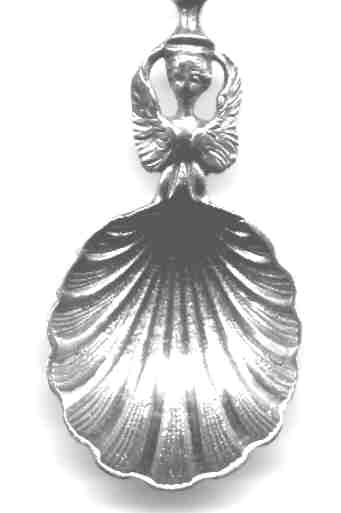
A very pretty 9.2" olive spoon made in Germany (800 silver) with a winged female just above the bowl. The finial is a nice sailing ship. The vermeil bowl is a really detailed sea shell shape. I suspect that this spoon was made in the late 1880's, but it is marked "Germany", thus it is possible that it is a 20th century remake.
Return to Spoon World Index